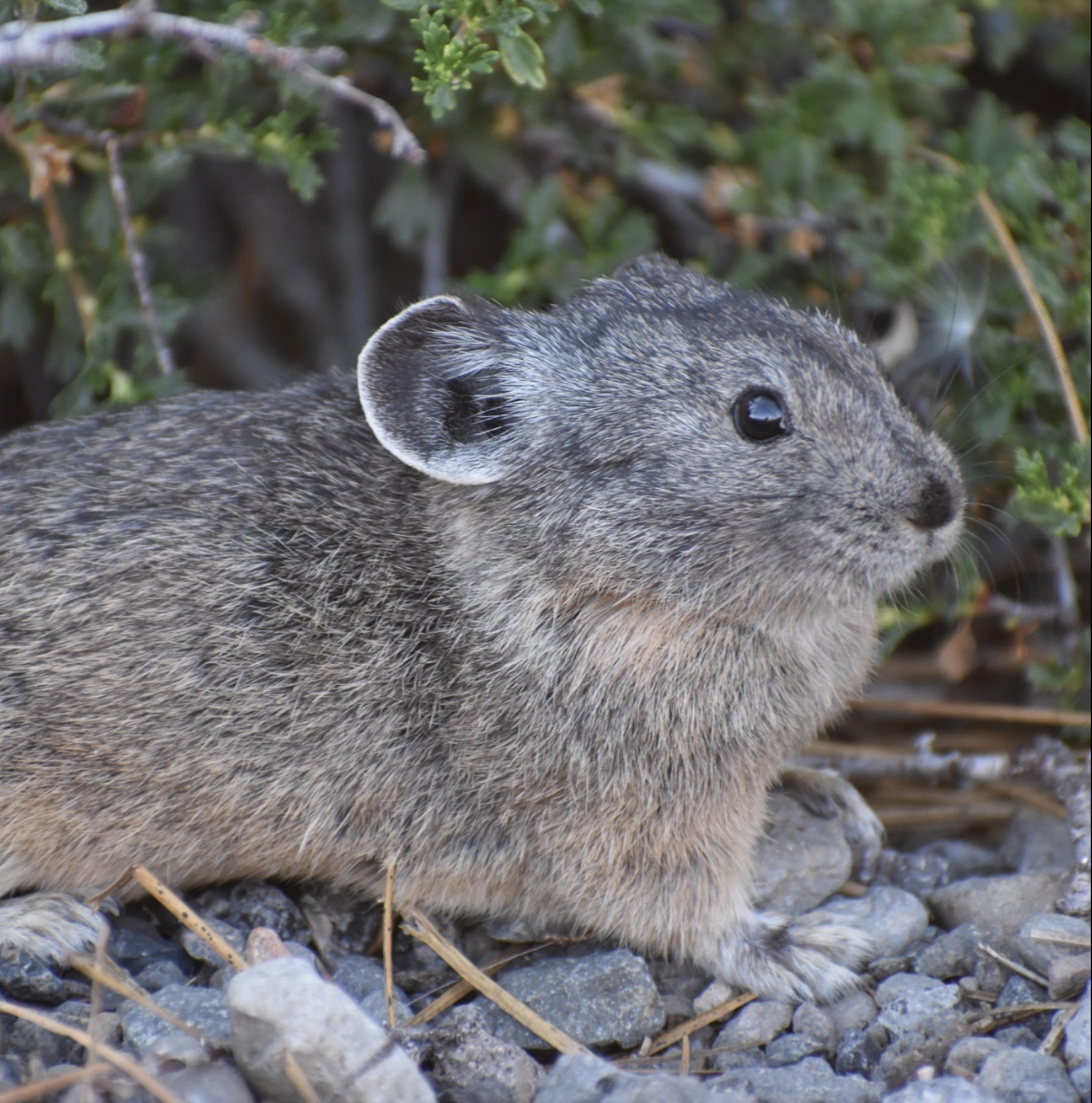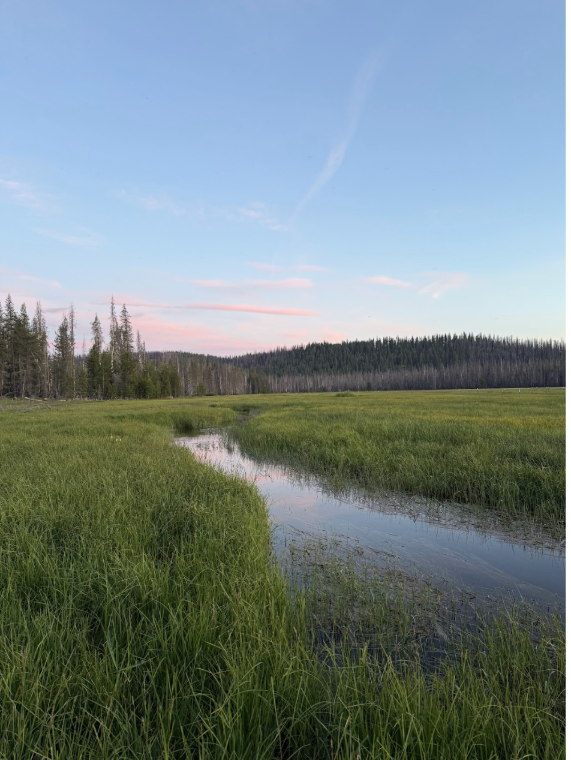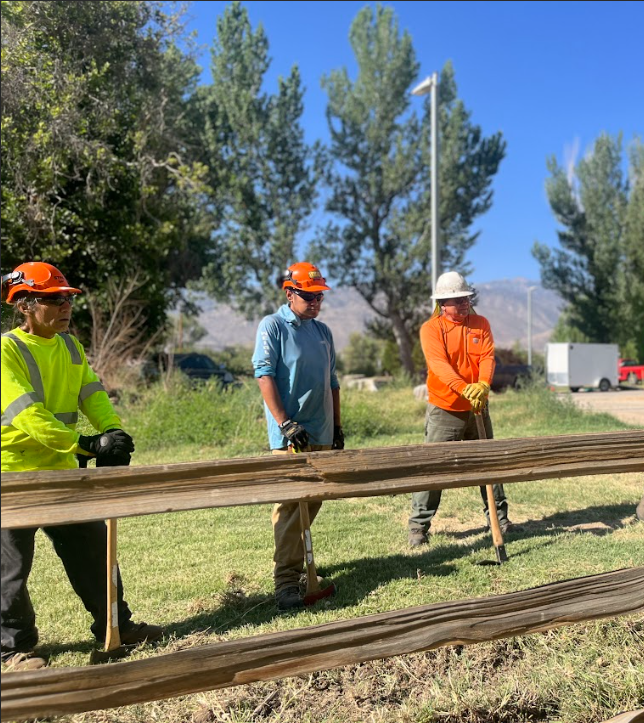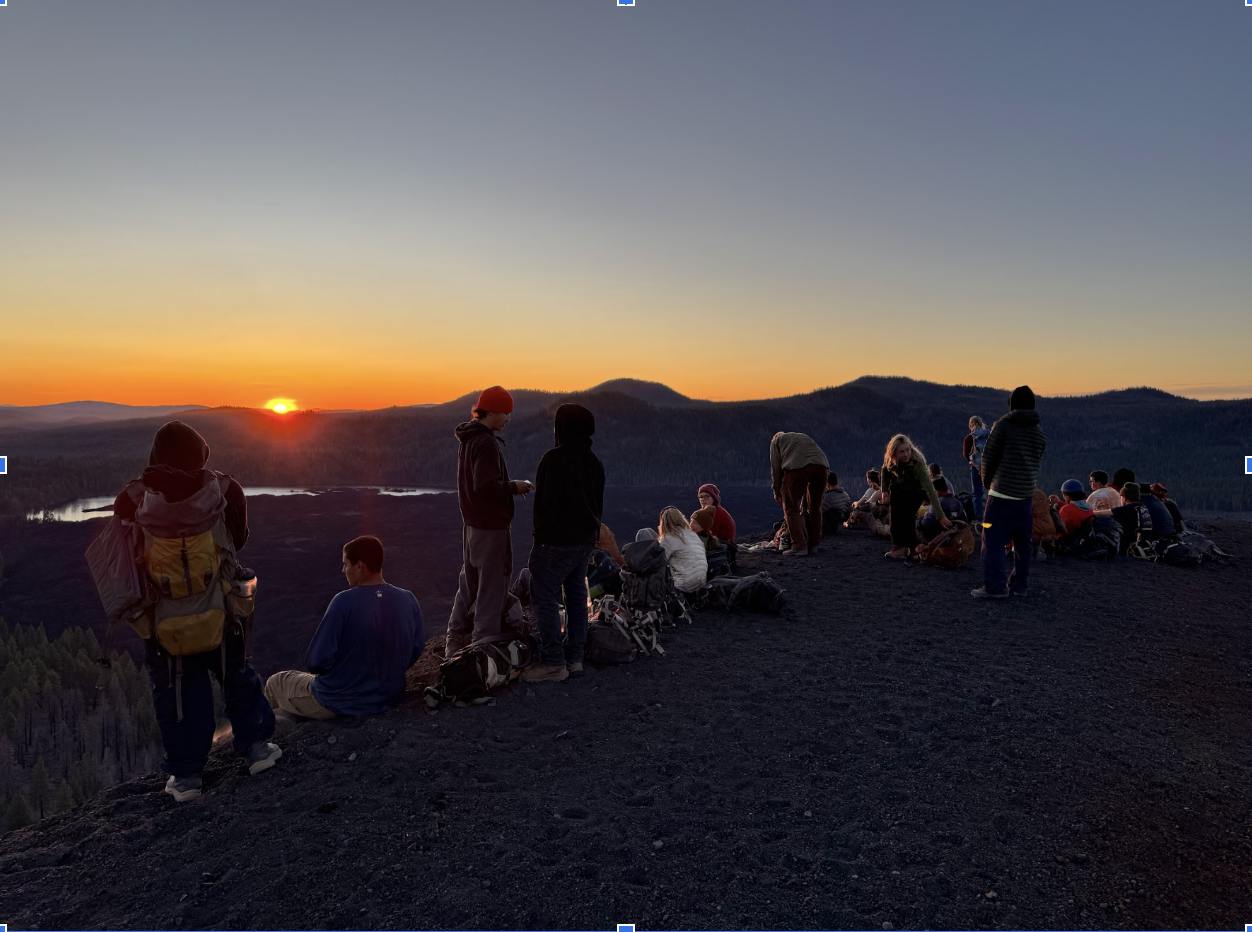July is World Wildlife Month
|
This cute mammal is an American Pika. Pika are sensitive to changes in climate and temperature and surveying is critical to better understand the conditions under which pika will survive warming temperatures and those conditions which will make pika dispersal difficult. Since 2021, Sierra Institute has been partnering with Lassen Volcanic National Park to monitor sensitive species such as the pika to make sure our collaborative restoration efforts are protecting the wildlife inhabiting the landscape.
|
In our work, we both lead and participate in projects that assess and monitor forest health on a species level. We partner with agencies like the Plumas National Forest and Lassen Volcanic National Park to conduct long term wildlife projects for species like the American pika, spotted owl, yellow-legged frogs, Wilson’s snipes, northern goshawk, pine martens, and many more. We can learn a lot about the health of our forests by understanding the health and vibrancy of their inhabitants.
|
Request for Quote: Wildlife & Aquatic Species Surveys
|
As part of the North Fork Forest Recovery Project, Sierra Institute is seeking qualified contractors to conduct wildlife and aquatic species surveys across approximately 5,968 acres of forest and 85 stream miles in Indian Valley and the surrounding area. These surveys are a critical component of our forest restoration and planning work and must follow U.S. Forest Service protocols. Target species include California Spotted Owl, American Goshawk, Willow Flycatcher, and aquatic amphibians. If you are interested in submitting a quote, please review the full Request for Quotes (RFQ) linked below.
|
Quotes are due by August 8, 2025.
Please don’t hesitate to reach out with any questions. We look forward to hearing from you!
|
Field Tour: Hydrology and Aquatic Habitat Subcommittee
|
On July 10th, Sierra Institute led a field tour to explore key watershed restoration priorities across the upper Deer, Mill, and Antelope Creek systems. The tour visited three primary locations: the Gurnsey-Deer Creek Bridge, Deer Creek Falls, and Windy Gap.
Gurnsey-Deer Creek Bridge: Participants were introduced to the South Lassen Watersheds Group and the newly formed Hydrology and Aquatic Habitat subcommittee. Included was discussion about the importance of meadow restoration to support overall watershed health with insights about active projects, funding prospects, and opportunities to streamline permitting.
Deer Creek Falls: Discussions centered on the ecological value of anadromous habitat, the current status of salmon populations, and the suite of restoration activities under consideration, which range from strategic fuel breaks to road and crossing improvements to prescribed fire. Important to the conversation was how partners collaborate to implement this work.
Windy Gap: The group observed the aftermath of the Park Fire, talked through effective management approaches for post-fire landscapes, and identified potential strategies, policy considerations, and next steps to advance collaborative work in the region.
|
Basic 40 Wildland Fire Trainings
|
In July, Sierra Institute’s Danny Manning led Basic 40 Wildland Fire Trainings with two of our tribal partners, the Bishop Paiute and the Pit River Tribe . The Basic 40 training provides information on fire behavior, weather patterns, how to work as a crew, incident command protocols, basic tool instruction, hand line construction, and how to establish a hose lay. These trainings are critical preparation for future, current, and former firefighters and elders who will be involved in cultural monitoring and burning. In rural tribal areas it’s especially important to understand how wildland fire work can be applied for community benefit. Sierra Institute is able to travel to tribal communities to provide trainings thanks to High Road Training Partnership (HRTP): Resilient Workforce Program funding.
|
P-CREW 2025 Session 1 has wrapped!
|
Twenty-one P-CREW students have just graduated! For the past month students have been out in field learning by doing. They cut, they dug, they built, they hiked, they swam, they learned, and they sweat. Every year we are so proud of the challenges our student-workers take on. Here are just a few of the major accomplishments these teens achieved this session:
|
-
Learned basic First-Aid & CPR
-
Planted Aspen
-
Removed White Thorn
-
Hiked to the top of Cinder Cone (6,000ft+) to watch the sunrise
-
Worked alongside experienced sawyers
-
Removed lodgepole pine saplings in wetlands
-
Built beaver dam analogs
|
Student Reflections: "Silver Wonders" by Brooke Lenoge
|
"After an exciting weekend at Lassen National Park, we began our second full work week. Sunrise hikes and lakeside naps faded into trailwork and crosscut sawing. Green Crew camped at Silver Lake from Monday to Wednesday, which also served as our worksite. We cleared the roughly three-mile trail bordering the lake. Mcleods, axes, saws, and loppers were used to push back the insistent brush. We stopped for lunch atop a rocky overhang, the lake shining sapphire with silver speckles below our almond butter and jelly wraps. We finished the lake trail in a day and a half and moved on to another trail in the Caribou Wilderness. Next thing we know, we are back at work, our tools shining in the light. Upon getting back to camp, we jumped into Silver Lake to wash off the workday. A kind neighbor let us use their kayaks and paddle boards, making a fun day even better. On Thursday morning, we packed up camp and set out for Lassen once more. The past two days, we've joined with the Wilderness Fuels Module and have learned to use crosscut saws to set the stage for a prescribed burn. Those of us interested in wildland firefighting have gotten into some great conversations about it. We are currently camped near Manzanita Lake and are excited for a really fun weekend. Happy 4th of July!"
|
At Fire Ready Truckee Tahoe, hosted by the Tahoe Truckee Community Foundation, our Fundraising and Development Specialist Ariana Bernstein connected with community members to discuss cross-laminated timber (CLT). Sierra Institute is in the process of building a local mass timber facility that will produce CLT using sustainably sourced, small-diameter trees from forest restoration projects. Many attendees were excited to learn how this facility will help reduce wildfire risk by putting excess forest fuels to productive use, create local jobs, and provide innovative building materials that support resilient, climate-smart communities.
|
We’re still looking for Brownfields sites!
|
If you know of a former commercial or industrial site that needs clean-up we want to talk to you! In addition to two assessments already underway, the Sierra Institute has capacity for 3-4 new brownfield assessment projects this year and is accepting proposals now through September 30, 2025. We are looking to collaborate with anyone in Butte, Glenn, Lassen, Modoc, Plumas, Tehama, Trinity, Shasta, Sierra, and Siskiyou Counties who owns a brownfield or a vision to revitalize one in their community. Review and final decisions will be issued in December.
|
SCALE-Sierra to California All Lands Enhancement Annual Meeting
|
This week we are hosting our annual in-person Sierra to California All Lands Enhancement (SCALE) convening in North Lake Tahoe. We’ll be welcoming nearly 100 people–community members, organizations, agency officials and landscape restoration stakeholders–for important community conversations and project updates. On the agenda are topics like microgrants, federal priorities, state budget updates, wildfire and forest resilience, cultural burning and indigenous land stewardship, and collaborative updates. Speakers include representatives from the USDA Forest Service, Rural Voices for Conservation Coalition, American Forest Resource Council, Yosemite/Sequoia Resource Conservation & Development Council and more. We look forward to generative conversations with some great partners and community leaders.
|
Staff Dinner in Taylorsville
|
In early July local members of our team–and a few out of towners–gathered for an outdoor pizza party at our Taylorsville, CA office. About 25 year-round staff and seasonal staff came together to create space for connection, conversation, and celebration across programs. Summer for us means a lot of field work across the north state so it is a rare and meaningful opportunity to come together in one place as a community.
|
Your support helps us to sustain our work in our forests, our watersheds, and our rural communities. Thank you!
|
P.O. Box 11, 4438 Main Street
Taylorsville, CA 95983
|
|
_copy.jpg)



